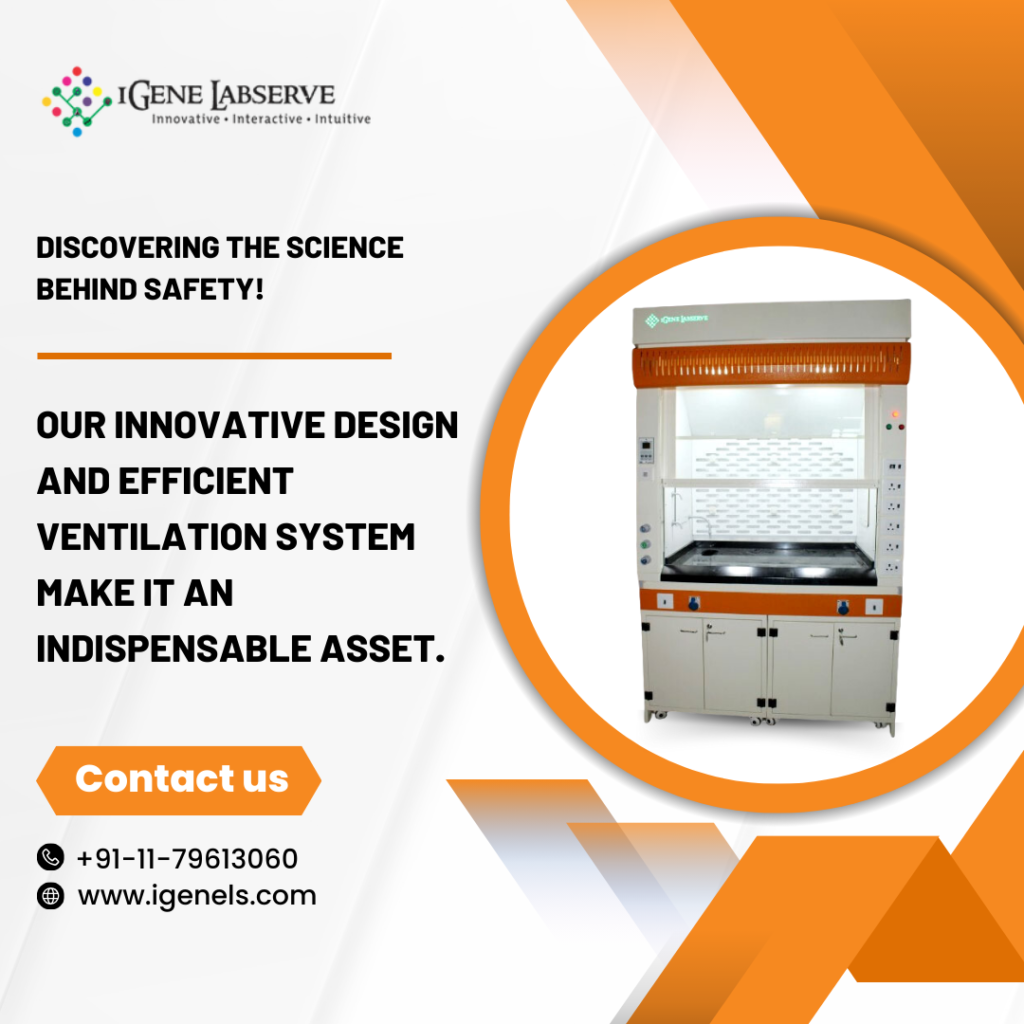Fume hoods are one of the essential elements in laboratory settings and ensure efficiency and safety within scientific environments where research work takes place. The equipment is primarily designed to protect laboratory personnel from vapours, hazardous fumes, and dust. However, laboratory fume hoods also help maintain a controlled environment in labs.
What is a fume hood?
Before you know how laboratory fume hoods create a protective environment within lab settings, it is essential to find out how it works. Typically, the equipment looks like an enclosure with ventilation for dust, fumes, vapours, and gases to escape. Therefore, the workers in the laboratory can protect themselves from inhaling the hazardous substances that generate during the chemical procedures. It has a sliding window, which is also called sash and especially functions for safeguarding employees from splashes and spills that commonly occur within the fume hood. No wonder fume hoods are the heart and soul of exhaust system in the laboratory and usually needed for local ventilation.
Operation of a fume hood
A fume hood pulls air inside it and takes it away from where workers conduct research procedures through a blower. Once the air goes in, the equipment filters the hazardous substances and let it escape through the exhaust system. It also removes hazardous fumes and circulates the rest of the air within the room. Most laboratory fume hoods come with alarms and gauges that send out warning signals, informing the laboratory personnel about the dangers of hazardous fumes and low airflow.
Types of fume hoods
Fume hoods used in laboratories are available in different configurations ad meets different operations. Accordingly, here are the fume hoods about which you need to know:
- Ductless fume hoods
The ductless hoods come with a filtration technology to clean the air before it re-enters laboratory settings and circulates again. Based on the size and the usage pattern of the fume hood, you may invest in walk-in or bench-top fume hoods. Each one has different features. So, you need to explore each feature carefully and buy equipment that is a right fit for your requirements.

Why is it important for laboratories to have fume hoods?
Laboratory personnel conducting researches and experiments in the laboratory are often compelled to inhale hazardous substances into their lungs, which may have a detrimental effect on their overall health. You cannot dislodge the toxins from your lungs, so the best solution is installing fume hoods. That way, you can successfully create a barrier between the exhalation of toxic fumes and laboratory personnel, and maintain a safe environment. Here is what makes fume hoods a must-have for laboratories:
- Laboratory fume hoods are a perfect fit for handling small fires and explosions. The sash is the primary component that safeguards people from explosions and fires. Typically, it helps withstand the impact of explosion. For instance, having a fume hood may mean that glass will only crack and not shatter into pieces. Therefore, the sash needs to remain close when the hood is not in use. This is to guarantee the safety of workers. When the sash stays open, the substances and glass inside may come out in case of an explosion and harm the laboratory personnel around.
- Fume hoods also play a crucial role in containing and controlling spills within laboratory settings. The equipment comes with lips for containing liquid spills though not on a major scale. These lips are wide enough to act as catch basins for breakage and spills. However, you can only find them in the new-age laboratory fume hoods and not in traditional equipment. If you want to buy old equipment, remember to buy spill containment products at the same time.
Using the fume hood appropriately
When working with radioactive compounds within laboratory settings, the laboratory fume hood needs to undergo proper inspection to determine whether they are properly functioning or not. Besides, the personnel working there need to keep in mind that the primary functionality of the fume hood is removal of toxic fumes. So, in no way should it be used for storing equipment and chemicals. The inspection of fume hoods needs to be conducted by professionals to ensure that all compliance measures have been adhered to. They work best when used in laboratories appropriately.
So, here is all you need to know when working with fume hoods in laboratories. If you are keen to buy an upgraded laboratory fume hood from a reliable manufacturer, look no further than IGene Labserve. They are one of the most reliable manufacturers selling industrial-grade and laboratory equipment. Get in touch with them here https://www.igenels.com/ for striking deals.

